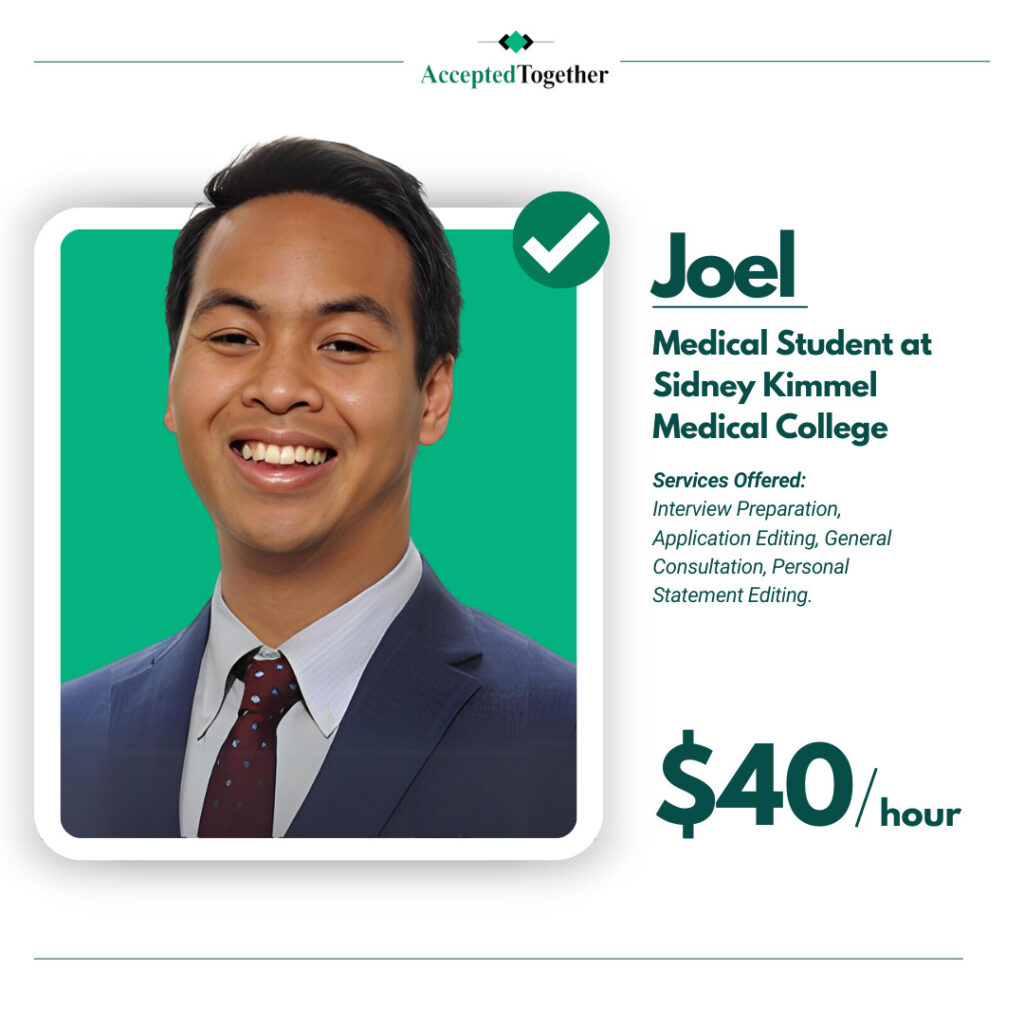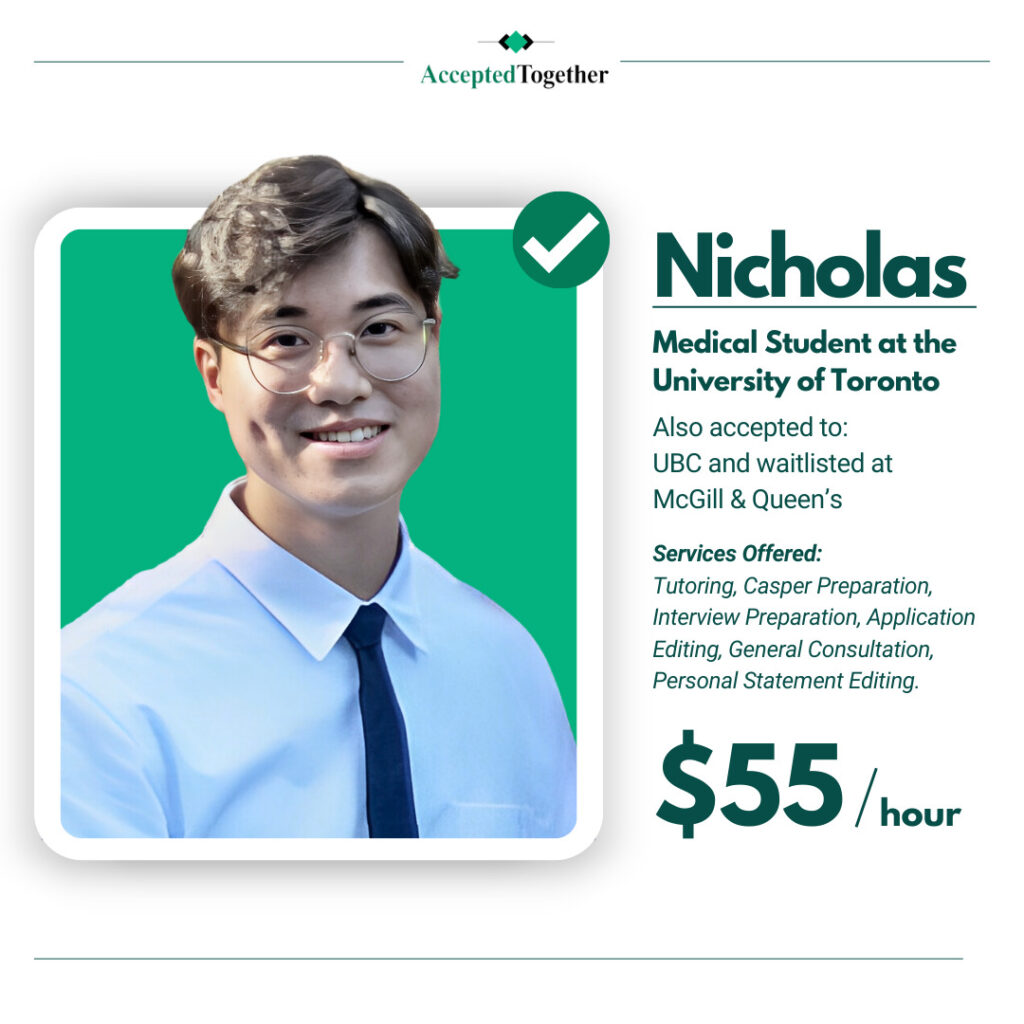Table of Contents
Introduction
Applying to medical school is a significant and exciting step in your educational and professional life. The question of “How many medical schools to apply to?” is one of the most critical decisions you will make during this process. Whether this is for AMCAS, AACOMAS, Canadian applications (OMSAS and others), or any other medical school application system, this is a critical question. This decision carries weight because it can shape your path toward becoming a doctor. The process of deciding how many applications to submit requires careful consideration, strategic planning, and a balance between ambition and practicality.
Across the US, countless college students are immersed in the arduous task of reviewing their GPAs, MCAT scores, extracurricular activities, and the wide array of medical programs available to them. All of this is done in the hope of securing that elusive acceptance letter. However, the key to success is not just in aiming high but in creating a thoughtful list of schools that align with both your dreams and your academic profile. By doing so, you increase the likelihood that your application will not only be received but also seriously considered.
This guide is designed to help you navigate the often overwhelming world of medical school applications. We will explore various factors that influence the decision on how many schools to apply to, providing practical advice and insights along the way. Our goal is to help you strike the right balance between your aspirations and the realities of the application process, ensuring that each application moves you one step closer to achieving your goal of becoming a doctor.
Identifying Your Potential Medical Schools
The first and perhaps most crucial step in deciding how many medical schools to apply to is identifying the institutions that align with your goals, qualifications, and preferences. This process is not just about choosing a number but involves a comprehensive analysis to find the schools where your application will have the best chance of success.
Click to see hundreds of consultants who can mentor you:


Considering Basic Prerequisites and Geographic Relevance
Before you can even begin to think about how many schools to apply to, you must first evaluate the basic prerequisites required by each school. This includes understanding the minimum GPA, MCAT scores, and other qualifications needed for consideration. Each medical school has its own set of criteria, and it’s important to be honest with yourself about where you stand academically.
In addition to academic prerequisites, geographic relevance plays a significant role in your decision-making process. Medical schools often have a preference for in-state or regional applicants, which could increase your chances of acceptance if you apply to schools within your area. Additionally, attending a school close to home might offer financial and logistical benefits, such as lower tuition fees and reduced travel costs.
When evaluating schools, consider how your academic profile matches up with their prerequisites. This comparison should guide you in deciding whether you should apply to certain schools. If your GPA and MCAT scores fall within the range of a school’s accepted applicants, then that school should be a strong contender for your application list. Conversely, if your scores are below the average, you may want to reconsider applying, unless you have other strong aspects of your application that could offset lower scores.
Investigating Academic and Standardized Test Score Averages
Your MCAT score and GPA are among the most critical factors that medical schools consider during the admissions process. These numbers serve as indicators of your academic ability and potential for success in medical school. When deciding how many schools to apply to, it’s important to target institutions where your scores align with or exceed their accepted averages.
While it’s natural to aspire to attend prestigious medical schools, it’s equally important to be realistic. Applying to schools where your academic achievements give you a strong chance of admission is a strategic move. This doesn’t mean you shouldn’t apply to a few reach schools, but your list should primarily consist of schools where you meet or exceed the average academic standards.
Researching the average MCAT scores and GPAs of admitted students at each school can provide valuable insight into your chances of acceptance. Most medical schools publish this information on their websites or through resources like the Medical School Admission Requirements (MSAR) database. By comparing your scores with these averages, you can create a list of schools that are a good academic fit for you.
Utilizing Tools and Databases to Create an Initial List of Schools
In the digital age, numerous tools and databases are available to help you gather information and make informed decisions about where to apply. The MSAR database, for example, is an invaluable resource that provides detailed information about medical schools, including admissions statistics, curriculum details, and more.
Creating an initial list of potential schools should not be a random process. Instead, it should be based on careful analysis of where your qualifications match the schools’ expectations. The goal is to ensure that every application you submit is a strategic step toward your medical career.
Start by compiling a list of schools that interest you, then use resources like the MSAR database to refine your list based on your academic profile and other relevant factors. This process will help you narrow down your options and focus on schools where you have a realistic chance of acceptance.
Aligning Schools’ Mission with Your Profile

Once you have an initial list of potential schools, the next step is to ensure that your personal and professional goals align with each school’s mission and values. This alignment is critical because medical schools are looking for students who not only meet their academic standards but also share their vision for the future of medicine.
Analyzing Schools’ Mission Statements and Priority Student Categories
Medical schools often have mission statements that outline their core values, goals, and the types of students they are looking to admit. These statements provide insight into what each school values most, whether it’s research, community service, or a commitment to serving underserved populations.
When deciding how many medical schools to apply to, it’s important to analyze these mission statements and consider how your background and goals align with them. For example, if a school emphasizes a strong commitment to community service and you have extensive volunteer experience, this could make you a strong candidate for that school.
Additionally, some medical schools have priority categories for students, such as those from certain geographic regions, underrepresented minorities, or individuals with specific career interests. Understanding these priorities can help you determine which schools are more likely to consider your application favorably.
Reflecting on Personal and Professional Alignment with Schools’ Values
After analyzing the mission statements and priorities of your potential schools, take some time to reflect on how your personal and professional experiences align with the values of each institution. This reflection is crucial because it will help you determine not only how many schools to apply to but also which ones are the best fit for you.
Consider your long-term career goals and how they align with the programs offered by each school. For example, if you are passionate about rural medicine, look for schools that have a strong focus on training physicians to work in underserved areas. If you are interested in academic medicine, seek out schools that offer robust research opportunities.
Aligning your values with those of the schools you apply to can significantly increase your chances of acceptance. When your application reflects a genuine connection to the school’s mission, it is more likely to resonate with admissions committees and set you apart from other applicants.
Assessing the Influence of Experiences and Extracurricular Activities

While academic achievements are important, medical schools also place significant value on your experiences and extracurricular activities. These elements provide context to your academic record and demonstrate your readiness for the challenges of medical school and beyond.
Research, Volunteer, and Shadowing Experience Metrics
Your research, volunteer work, and shadowing experiences are crucial components of your medical school application. These experiences demonstrate your commitment to the field of medicine and provide evidence of your practical knowledge and skills.
When deciding how many schools to apply to, consider how your experiences align with the expectations of the schools on your list. Some schools place a strong emphasis on research, while others may value clinical experience or community service more highly. Understanding these preferences can help you tailor your application to highlight the aspects of your experience that are most relevant to each school.
For example, if you have extensive research experience, you may want to apply to schools that have a strong focus on research and offer opportunities for students to engage in cutting-edge projects. On the other hand, if your strength lies in community service, you should target schools that prioritize social responsibility and service to underserved communities.
Comparing Your Profile to Previously Accepted Students
One of the most effective ways to gauge your chances of acceptance is to compare your profile with those of students who were admitted to the schools on your list in previous years. This comparison can provide valuable insights into how your application stacks up against the competition and help you make more informed decisions about where to apply.
Most medical schools provide data on the academic profiles of their accepted students, including average GPAs, MCAT scores, and other relevant information. By comparing your own qualifications with these benchmarks, you can identify schools where you have a strong chance of acceptance and those where you may need to strengthen your application.
In addition to academic data, consider looking at the extracurricular activities and experiences of previously accepted students. This can give you a better understanding of what each school values in its applicants and how your own experiences align with those expectations.
Evaluating Educational and Practical Aspects
Choosing the right medical schools to apply to involves more than just meeting academic requirements. It also requires careful consideration of the educational and practical aspects of each institution, including curriculum design, teaching methodologies, and opportunities for clinical experience.
Investigating the Curriculum and Teaching Methodologies
The curriculum and teaching methodologies of a medical school can have a significant impact on your learning experience and success as a student. Different schools employ various approaches to medical education, ranging from traditional lecture-based instruction to more innovative methods like Problem-Based Learning (PBL) and team-based learning.
When evaluating schools, consider how their teaching methodologies align with your preferred learning style. If you thrive in a structured environment with clear guidance from instructors, a traditional curriculum may be the best fit for you. However, if you prefer a more hands-on approach that encourages critical thinking and collaboration, a school that emphasizes PBL or other interactive methods may be more suitable.
In addition to teaching methodologies, consider the structure of the curriculum itself. Some schools offer a more flexible curriculum with opportunities for early clinical exposure, while others may have a more rigid program with a focus on basic sciences in the first two years. Understanding these differences will help you choose schools that align with your educational preferences and career goals.
Exploring Advisory and Mentorship Opportunities
Mentorship and advisory support are critical components of a successful medical education. These resources provide guidance, encouragement, and practical advice as you navigate the challenges of medical school and prepare for your future career.
When evaluating potential schools, consider the availability and quality of mentorship programs. Look for schools that offer structured advisory programs with assigned faculty mentors who can help you set goals, choose electives, and plan your career path. Additionally, consider whether the school provides opportunities for informal mentorship, such as student organizations or peer mentoring programs.
Strong mentorship and advisory support can make a significant difference in your medical school experience, helping you stay on track academically and emotionally. When deciding how many schools to apply to, prioritize those that offer robust mentorship programs that align with your needs and goals.
Click to see hundreds of consultants who can mentor you:


Examining Connections to Local Hospitals and Clinical Experiences
Clinical experiences are a vital part of your medical education, providing you with the hands-on training necessary to become a competent and compassionate physician. When choosing which schools to apply to, it’s important to consider the quality and variety of clinical experiences offered by each institution.
Examine the school’s connections to local hospitals and healthcare facilities. Strong partnerships with well-respected hospitals can provide you with access to a wide range of clinical experiences, from primary care to specialized fields like surgery or oncology. These experiences are essential for developing your clinical skills and gaining exposure to different areas of medicine.
In addition to hospital affiliations, consider the structure of the clinical rotations themselves. Some schools offer a more traditional approach with fixed rotations in various specialties, while others may offer more flexibility, allowing you to tailor your clinical experiences to your interests. Understanding these options will help you choose schools that provide the clinical training you need to achieve your career goals.
Navigating the Application Process Efficiently
The application process for medical school is complex and time-consuming, requiring careful management of both your time and financial resources. To determine how many schools to apply to, you need to consider the practicalities of the application process, including the time and effort required to complete each application and the associated costs.
Understanding Application Complexity and Financial Implications
Each medical school application involves a significant investment of time, effort, and money. From primary application fees to secondary application charges and travel expenses for interviews, the costs can add up quickly. Understanding these financial implications is essential for determining how many schools you can realistically afford to apply to.
When budgeting for your applications, consider all potential costs, including the fees for submitting your primary and secondary applications, travel expenses for interviews, and any additional costs associated with attending interviews, such as lodging and meals. It’s also important to consider the opportunity costs of applying to multiple schools, such as the time and energy required to complete each application and the impact this may have on your other responsibilities.
By carefully managing your financial resources and understanding the full scope of the application process, you can make informed decisions about how many schools to apply to without stretching yourself too thin. Prioritize schools that are within your budget and where you have a strong chance of acceptance, and avoid applying to an excessive number of schools that could drain your resources.
Managing Time and Effort: Secondary Essays and Additional Materials
In addition to the financial costs, the time and effort required to complete secondary applications and additional materials are important factors to consider when deciding how many schools to apply to. Each secondary application typically requires several essays that are specific to the school’s programs and values. These essays provide an opportunity to showcase your unique qualities and explain why you are a good fit for the school.
However, writing high-quality secondary essays takes time and effort, and submitting a large number of applications can quickly become overwhelming. To avoid spreading yourself too thin, carefully consider how many secondary applications you can realistically complete without compromising the quality of your submissions.
When planning your application strategy, focus on schools where you are genuinely interested and where your qualifications align with the school’s expectations. This will allow you to dedicate the necessary time and effort to each application, ensuring that your essays and additional materials reflect your best work.
Developing a Targeted Short-List of Schools
After evaluating all the factors discussed above, you should have a clearer idea of how many medical schools to apply to. The goal is to create a targeted short-list of schools that reflect your ambitions, align with your qualifications, and fit within your financial and logistical constraints.
Applying Only Where You Have a Realistic Chance
One of the most important aspects of developing a targeted application list is focusing on schools where you have a realistic chance of acceptance. This means applying to schools where your academic qualifications, experiences, and values align with the school’s mission and admissions criteria.
While it’s tempting to apply to as many schools as possible in the hopes of increasing your chances of acceptance, this approach can be counterproductive. Applying to schools where you are unlikely to be accepted not only wastes your time and money but also takes away from the effort you could be putting into applications for schools where you have a better chance.
Instead, focus on applying to a smaller number of schools where your profile is a strong match for the school’s expectations. This targeted approach allows you to submit high-quality applications that are more likely to result in positive outcomes.
Balancing Aspirations with Realistic Expectations
In addition to focusing on schools where you have a realistic chance of acceptance, it’s important to balance your aspirations with practical considerations. While it’s natural to dream of attending a top-tier medical school, it’s also important to be realistic about your chances of acceptance and to apply to a range of schools that include both reach schools and safety schools.
Balancing your aspirations with realistic expectations involves understanding the competitive nature of medical school admissions and being honest with yourself about where you stand. By creating a balanced list of schools that includes a mix of reach, match, and safety schools, you increase your chances of acceptance while still pursuing your dreams.
Avoiding the Pitfalls of Over-Applying
Finally, it’s important to avoid the common pitfall of over-applying. While it may seem like a good idea to apply to as many schools as possible, this approach can lead to burnout and diminish the quality of your applications. Over-applying can also be financially and emotionally draining, making it harder to focus on the schools where you have the best chance of success.
To avoid over-applying, carefully consider how many schools you can realistically apply to while maintaining the quality of your applications. Focus on schools that align with your goals and qualifications, and be selective about where you apply. This targeted approach will help you stay focused and motivated throughout the application process.
Conclusion
Deciding how many medical schools to apply to is a critical step in your journey to becoming a doctor. By carefully considering your qualifications, aligning your goals with school missions, and managing the application process efficiently, you can create a strategic and focused application list that maximizes your chances of acceptance.
Remember, this decision is not just about numbers. It’s about making informed choices that align with your personal and professional goals, and ensuring that each application you submit reflects your best work. By approaching the process with careful planning and thoughtful consideration, you can navigate the complexities of medical school admissions and move one step closer to achieving your dream of a successful career in medicine.




